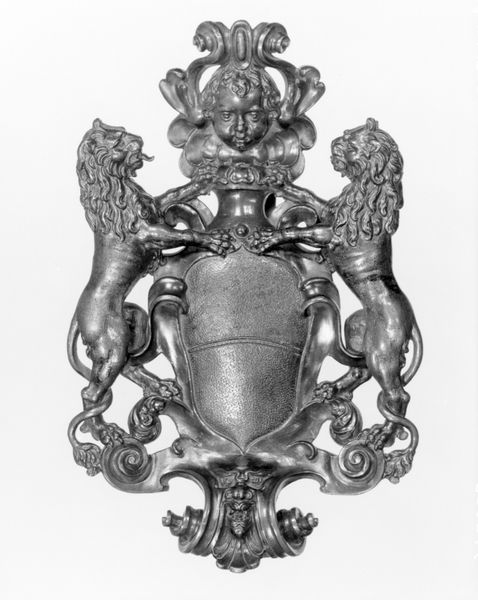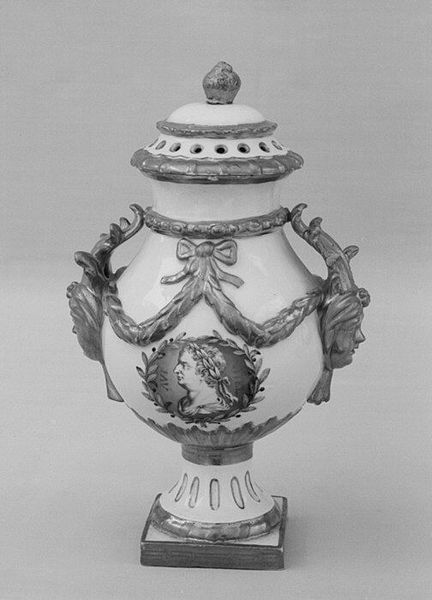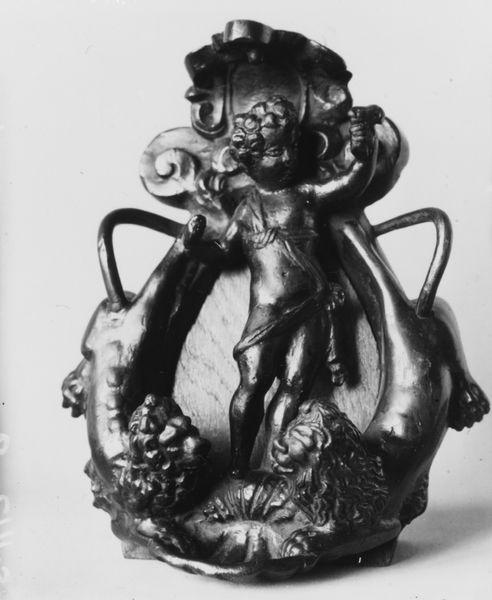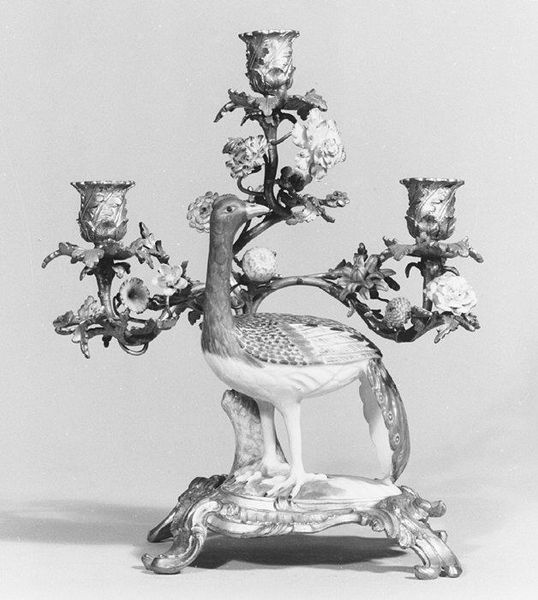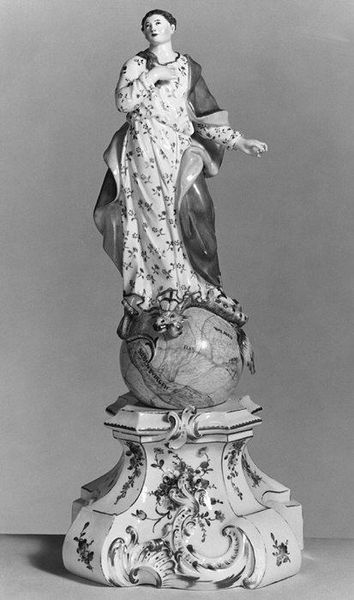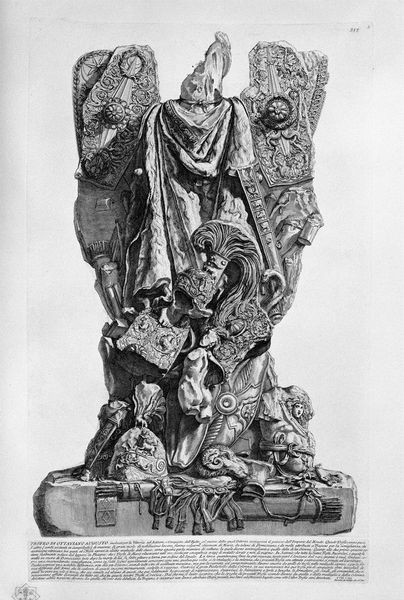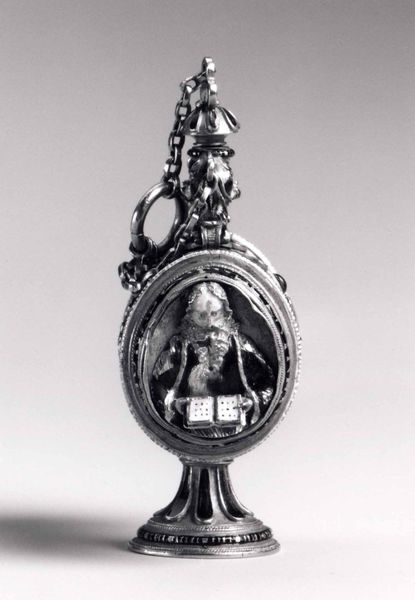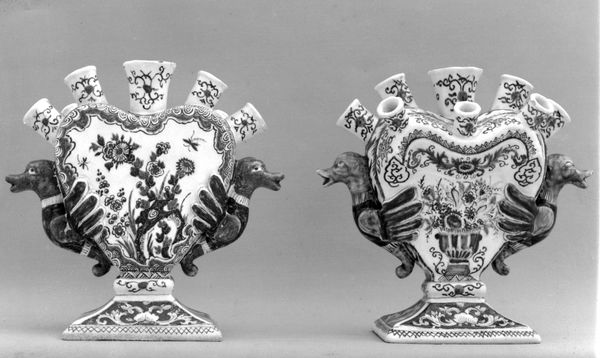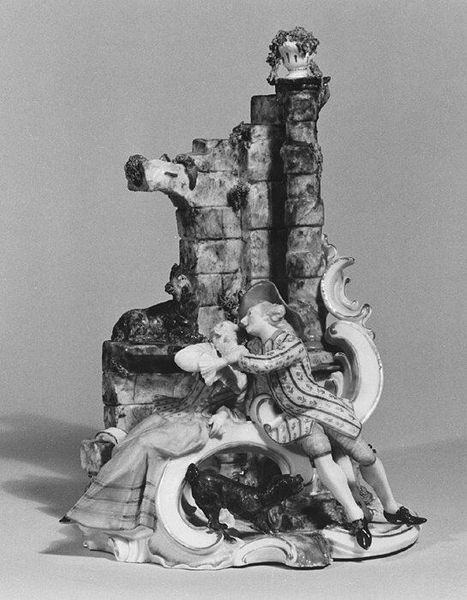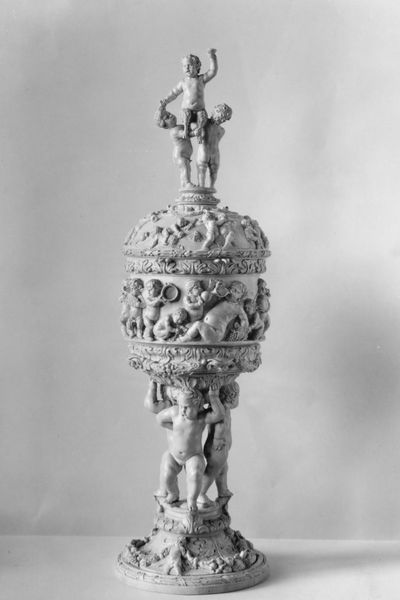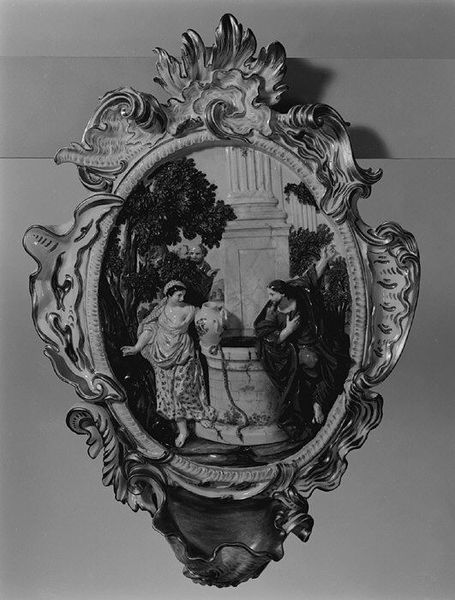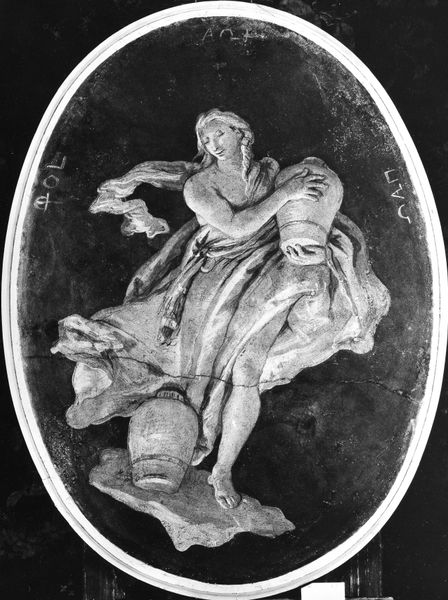
ceramic, sculpture
#
medieval
#
sculpture
#
ceramic
#
sculpture
#
decorative-art
Dimensions: Height: 15 5/8 in. (39.7 cm)
Copyright: Public Domain
Curator: Here we have a stoneware "Pilgrim Bottle," crafted sometime between 1568 and 1578. Currently, it resides at the Metropolitan Museum of Art. Editor: It’s…intense. My first impression is almost visceral. Those grotesque masks popping out from the surface and that snake coiling around the neck are definitely grabbing my attention. Curator: Indeed. We should consider its historical context as a symbol of pilgrimage and social status in Renaissance Europe, bearing witness to significant artistic movements across Europe. Editor: Right, but I’m also thinking about the hands involved in crafting it. Can you imagine the specific technical skills it required, throwing the pot, applying the ornamentation – each layer shaped by specific economic and cultural pressures within that workshop? What did ceramic labor look like back then? Curator: It's compelling to look at the means of production and social context. Remember that these bottles were produced in workshops, contributing to trade networks. The coat of arms suggest a particular patron. I imagine it could have been displayed quite prominently as a signifier of their place in the social hierarchy of the time. Editor: Absolutely. I also note the careful application of cobalt, in relief on the vessel’s primary features. We also have this almost-medieval bestiary represented: two heraldic lions, intertwined leaves. Curator: Which begs the question of imagery, but beyond heraldry. Pilgrimage bottles had strong connections with the cult of saints. Could those gargoyle-like figures also serve a protective, maybe even apotropaic function? Editor: I'm drawn back to the process: was it a collaborative effort, with different artisans contributing specific elements? How were these forms produced to meet an ever-growing European appetite for specialized pottery? What trade routes sustained the supply chain for these ceramics to continue thriving and to survive over centuries? Curator: It presents fascinating challenges, studying what such artwork stood for in society at that particular historical time. How does it influence society, and vice-versa. The role of pilgrimage itself! How this type of decorative art relates to the religious upheavals. So much to investigate further! Editor: Exactly, let's uncover it together, connecting materials, skills, labor, and histories.
Comments
No comments
Be the first to comment and join the conversation on the ultimate creative platform.
